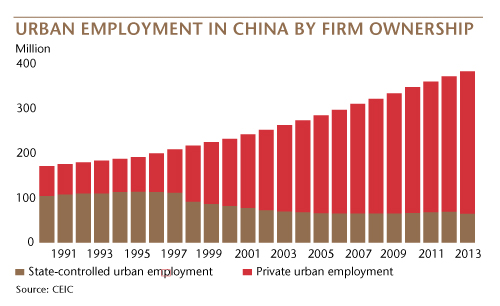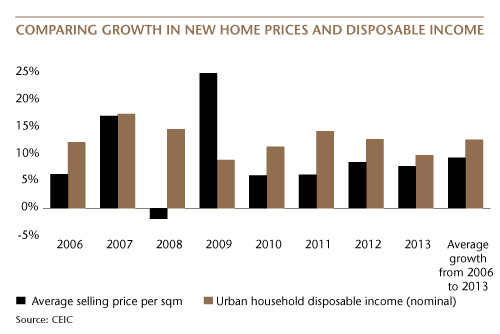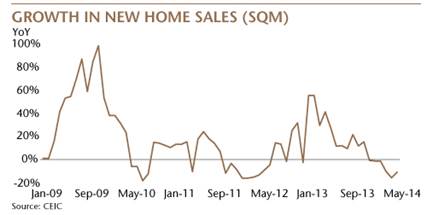Investment Strategies
GUEST COMMENT: Understanding Chinese Volatility And How To Avoid Getting Scared

Volatility may be rising in China and there are fears about the solidity of its economy but those concerns should not be exaggerated, argues Matthews Asia, the fund management house focusing on the region.
The following comments were made by Matthews Asia, the
US-headquartered investment house that focuses – as its name
suggests – on the Asia-Pacific region. The views here are
republished with permission. The article’s author, Andy Rothman,
discusses a significant concern about whether rising volatility
will prove a particular headache or not for wealth management
clients, and suggests how people should view it.
Rising volatility in China is a consequence of economic
modernization and should not be feared by long-term
investors.
While it is inevitable that China will, on average, grow a bit
more slowly every year for the foreseeable future, rising
volatility is a consequence of economic modernization and should
not be feared by long-term investors.
Having bet its future on the success of private enterprise, Party
leaders are just now growing comfortable with the idea that
capitalism must allow for failure.
Only 10 per cent of new homebuyers are speculators, with 90 per
cent of sales going to owner-occupiers. And Chinese homebuyers
have a lot of skin in the game: they must put a minimum of 30 per
cent down for a mortgage.
The media reports daily on the increasingly tumultuous state of
the Chinese economy. One private firm goes bust. Another misses a
bond coupon payment.
What great news! Bring on the failures!
Inevitable
While it is inevitable that China will, on average, grow a bit
more slowly every year for the foreseeable future - consider the
base effects and a shrinking workforce, among other factors -
rising volatility does not signal impending doom. Instead, it is
a consequence of important, and largely positive, structural and
philosophical changes underway in China today.
The most significant structural change is the growth of China’s
private sector, which is now the driving force of an economy that
had no entrepreneurs when I first worked there 30 years ago. That
all began to change in the late-90s, when the Communist Party
eliminated 46 million state-sector jobs over six years. That’s
equal to sacking 30 per cent of today’s US labour force, but few
outside of China remember that dramatic start to the reform
process, or understand that those layoffs were accompanied by the
largest one-time transfer of wealth ever seen, as state-owned
housing was handed over, for a nominal fee, to Chinese
workers.
Today, 83 per cent of the urban workforce is private and almost
all new job creation is by private firms. Private companies
account for about 70 per cent of investment and industrial sales,
and the largest share of profits among larger industrial firms.
The state still controls the financial sector and most
capital-intensive companies, but China has become very
entrepreneurial over a very short period of time.

As the economy becomes increasingly market-driven, greater
volatility is inevitable. We know that market economies cannot
avoid periodic recessions, and in the future, this will apply to
China, especially if the Party continues to open up the financial
sector.
This liberalisation should be welcomed by everyone who has urged
the Party to expand economic and personal freedom for its
citizens and its enterprises. Investors have learned to deal with
volatility in developed markets, and they need to do so in China,
acknowledging it as a sign of economic development.
The important philosophical change is the Communist Party’s
recent acceptance of the concept of creative destruction. Having
bet its future on the success of private enterprise, Party
leaders are just now growing comfortable with the idea that
capitalism must allow for failure. As with previous reforms, this
change will be implemented gradually and cautiously.
We’ve seen the first stages of this, as local governments have
apparently been instructed to refrain from bailing out a few
small, distressed private companies.
Death watch
The media has been staging a “death watch” in the city of Ningbo,
waiting for the failure of a single residential property
developer. But, here too, failure should be embraced. There are
probably 90,000 developers in China, although I’d be surprised if
more than 1,000 have more than one project underway. Would it be
that shocking to discover that a few of these firms are poorly
managed, and would fail if the Party didn’t prop them up?
This reflects a healthy and confident evolution of policy and
should be welcomed. This is the kind of change which should, over
the long run, result in a more sustainable economy and a more
open society; the kind of change that should lead to many more
successful, privately-owned, listed companies.
Finally, a few more words about China’s residential property
market, which must be viewed through the lens of the structural
and philosophical changes discussed above. Begin by noting that
the massive transfer of once state-owned apartments represented
the initial liquidity for the ongoing sale of commercially-built
flats that started only about 15 years ago.
Only 10 per cent of new homebuyers are speculators, according to
surveys, with 90 per cent of sales going to owner-occupiers. And
Chinese homebuyers have a lot of skin in the game. About 20 per
cent of sales are all-cash, and owner-occupiers must put a
minimum of 30 per cent down for a mortgage. When investors can
get a mortgage, they must put at least 60 per cent cash down.

Real estate (residential, office and commercial) has an outsized
role in the economy, including accounting for about a fifth of
all bank loans, but mortgage-backed securities are almost
non-existent, limiting significantly the contagion risk of
falling prices. New home prices have risen sharply, by an average
of 9 per cent annually over the past eight years, but nominal
urban income has risen even faster, by 13 per cent per year.

Finally, remember the base. A decline of 9 per cent
year-over-year in new home sales (by volume) during the first
five months of this year sounds far less scary if we know that
sales rose by 38 per cent during the same period last year. Sales
rose by only 2 per cent to 4 per cent YoY during 2011 and 2012,
and the world didn’t end.
